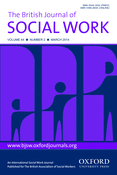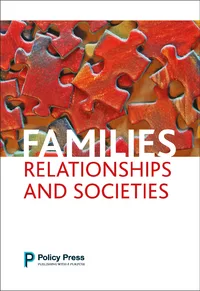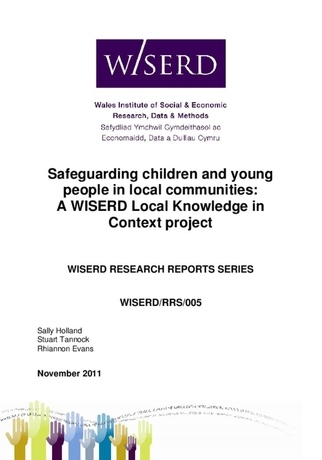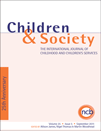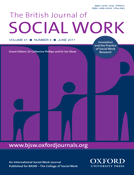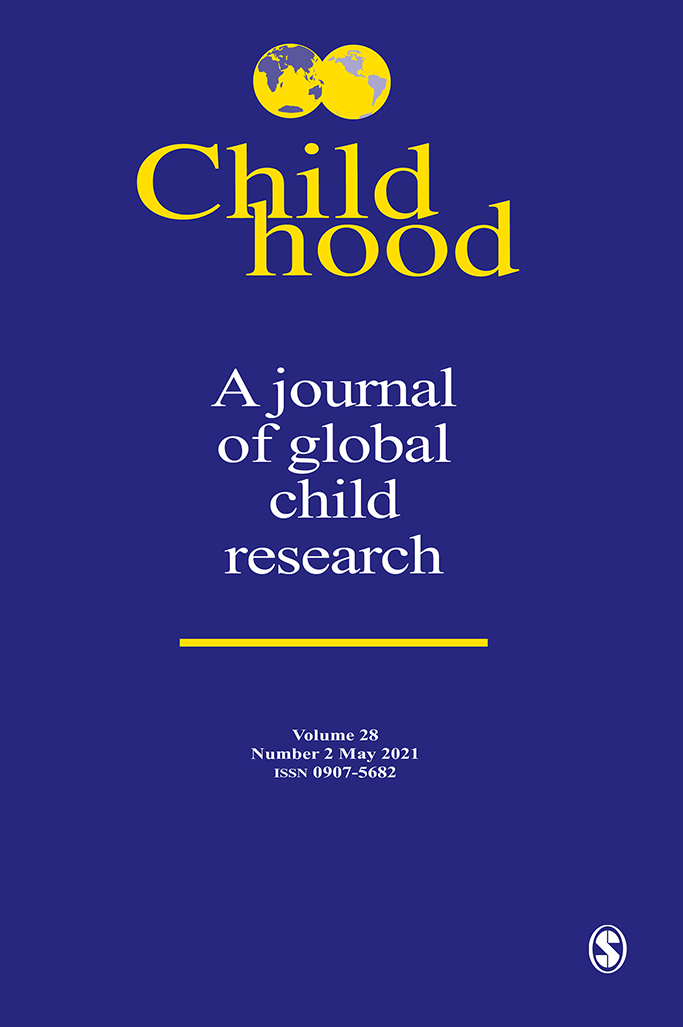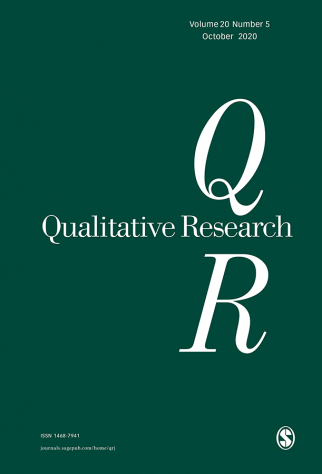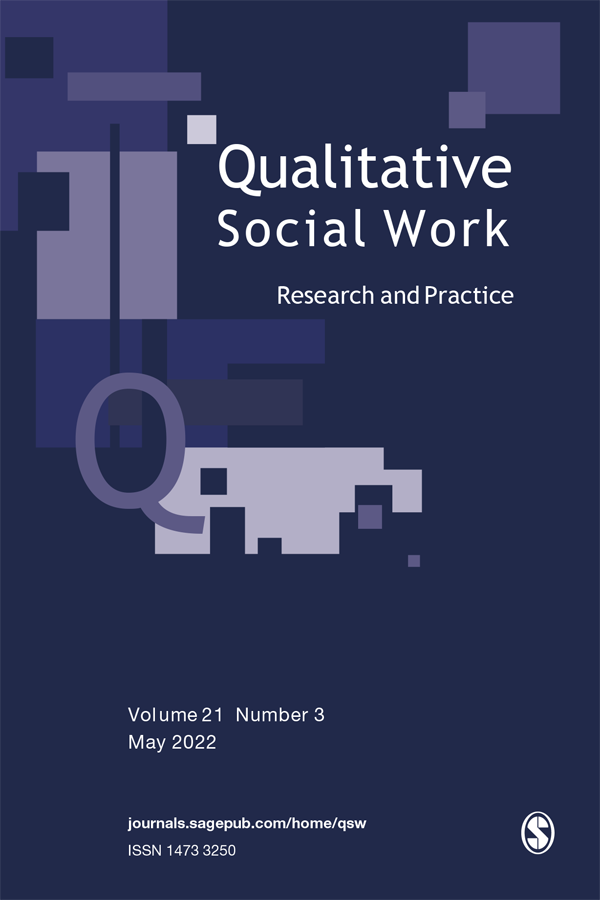Mae'r cynnwys hwn ar gael yn Saesneg yn unig.
This project, carried out between 2009 and 2011, was set within the context of the safeguarding children policy agenda, particularly the notion that child protection is ‘everybody’s business’. The research aimed to explore every-day safeguarding of children at neighbourhood level, including how safeguarding is seen, experienced and carried out by residents, community leaders and professionals.
The research related to two areas of contemporary life that have provoked concern in recent years. One has been that some children can slip beneath the radar of their local community and their maltreatment seemingly go un-noticed. The other has been that children’s, and indeed adults’, lives have become poorer because of our collective inability to trust children to navigate their neighbourhoods independently for play or travel (Gill, 2007) and our unwillingness as adults to interact with stranger children and young people in the community, either to help or regulate them (Furedi, 2008; Guldberg, 2009).
Research questions
Reflecting those two areas of debate and discussion, the project has explored the following questions:
- How do members of a local community understand and perform the safeguarding of children in their midst?
- What are neighbourhood experiences and perceptions of formal and community safeguarding agencies?
Methodology
The research took place in two neighbourhoods in the valleys region of south Wales.
The sites were chosen to complement the wider WISERD Knowing Localities Project.
The first, and primary site, which we have named ‘Caegoch’ is characterised by a high level of community development activity. This meant that there was an identifiable group of local activists, most of whom were residents, to consult regarding research design, the best ways to contact potential participants and to develop the research aims and scope to encompass local concerns. Caegoch has high levels of social housing, once built to house the families of miners. Almost all local mines are now closed and there are above-average levels of unemployment and child poverty in the neighbourhood.
The second site, which we have named Bryndwr, was chosen because it is geographically close to Caegoch and, therefore, receives the same local authority and statutory services. It provides some contrast to Caegoch in terms of mix of housing tenure, encompassing an old village community, some housing association homes and a large area of owner-occupied housing, some of it recently built. Both neighbourhoods are surrounded by open countryside but located near to a large south Wales town.
The majority of research data in the project was generated in Caegoch, where at least 40 residents (aged 3 to 80) and workers took part in the research. Caegoch proved to be the area where access to potential research participants proved more straightforward, largely through ‘snowball’ networking, following a series of initial introductions from community workers. We viewed Caegoch as the primary research site. In Bryndwr, twelve parents and grandparents, 8 young people and 6 professionals and other local workers took part in the research study. Data and analysis from Bryndwr were used as a secondary point of comparison and included where they provide further insight or depth to the findings.
The research design could be characterised as a case study exploration of child safeguarding in specific neighbourhoods. Early exploratory work involved discussions with key community leaders, a parents’ group and a young children’s group for advice on research design. In the first phase, residents were invited to engage in a range of multi modal methods (Dicks et al., 2006) to explore their experiences of child safeguarding on the estate. These are further described in a methodological paper (Holland et al., 2011a). In a second, longer phase of engagement, our primary researcher undertook a sustained period of participant observation. This involved invited observations of community meetings, observation of public spaces and conversations and further interviews with residents and key community players such as councillors, community development workers, school teachers, police, housing and social workers. Historical and contemporary media and policy documents were analysed and detailed field notes kept. Thematic, inductive analysis was managed within the qualitative software package, Atlas ti.
Findings
There is a wealth of qualitative data generated by this project, leading to many potential areas of analysis. Here we focus briefly on two areas of findings that relate most closely to the original research questions: firstly, informal care of children and young people at community level and, secondly, relationships between residents, community sector and formal safeguarding services.
Community Parenting
During the fieldwork we became interested in an area of activity we labelled ‘community parenting’. We defined this as the informal, everyday, shared culture of looking out for, or looking after, children within the immediate neighbourhood. In Caegoch, a community parenting culture was clearly identified in multiple interviews with residents and community workers. In Bryndwr, while there was some shared care between friends and relatives, some interviews included remarks about the absence of a sense of collective care of children. In observations of the two areas it can be seen that there is more of a culture of children playing outside in the street and communal green areas in Caegoch than in Bryndwr, where children appeared to more often play in the home or garden, or attend organised out-of school activities.
In Caegoch we noticed several features of activities we labelled community parenting.
Parents and other residents said that they would ‘look out for’ other people’s children on the estate and trust that others would look out for their children. Therefore they were happy to allow their children to play outdoors in the neighbourhood on the shared understanding that someone would intervene if their child was distressed or engaged in behaviour they shouldn’t. Adults in Caegoch were thus perceived as willing to intervene to care for, or regulate other people’s children.
They also shared information about risk with each other, warning about dangerous dogs or adults or young people they saw as a risk, suggesting that they be avoided. The downside of the collective culture in some streets was that it could be seen as exclusionary to outsiders and locals who become labelled as outsiders following disagreements between households.
Caegoch’s identifiable culture of community parenting was aided by social and spatial aspects of the estate. Housing and garden layout allow easy visibility of children playing in the street. Gardens were originally open-plan and are now demarcated by low fences. Many formal and informal play areas can be seen from windows and gardens. Children, taking researchers on tours of their preferred play areas were able to look down from parts of the hillside or patch of grass they were playing on and comment on who was at home or in the garden. This spatial openness of the estate contrasted with that of the newer build area of Hilltop, where houses were set further back from the street, and many gardens had high fences. A social aspect that aided community parenting was the practice of adults sitting outside in front gardens to socialise together and keep an eye on the children in the street.
A further socio-spatial aspect in Caegoch was the close proximity of family to many residents, with streets often containing several households who were related. One resident explained that she had six siblings living in separate households within two or three streets of her home. We would suggest that these kinship networks, which stretch across three or four generations in some cases, reinforced a sense that there was a communal culture of parenting, with general agreement on acceptable and unacceptable levels of parenting.
In Caegoch, interestingly, although the outdoor culture of play and parenting might be seen to be traditional and almost timeless, adult residents noted that many of them would no longer allow their children to play in a nearby wooded area, where they themselves had played as children, with concerns about drug and alcohol use by teenagers and young adults in that area.
Most residents, community workers and professionals such as social workers and housing officers spoke approvingly of the culture of reciprocity and collective care on Caegoch estate. Nonetheless, we identified a disjuncture between how residents felt they were perceived by outsiders and how they understood their own parenting practices. Much of the activity appears to residents and those who know the area well as self-evident and visible, but to outsiders the same practices may appear to reinforce stereotypes of unregulated children allowed to wander at will by negligent parents. Estates such as Caegoch have been subject of much dismay and anxiety in sections of the press (Jones, 2011) and we detected aspects of this discourse in interviews with residents from Bryndwr, when talking about estates such as Caegoch. This narrative was also present within Caegoch, as some parents differentiated themselves from those they perceived as giving the estate a bad reputation. Here, parents were described as absent, concerned more about drinking and smoking than directly caring for their children.
There is a risk that an analysis of community parenting in Caegoch or elsewhere can become an exercise in nostalgia or over-optimism. There are real social and economic problems on Caegoch, strongly exacerbated by high levels of poverty. Nonetheless, social analyses can overlook the many positives aspects of life in such communities. Almost all of the residents we spoke to said they would not wish to live anywhere else, including some who had moved there as adults and others who had tried living elsewhere for a time. Equally, it would be wrong to label areas such as Bryndwr as somewhat lacking. Although some residents there expressed some regret for what they saw as the lost collective cultures of their childhood (either in Bryndwr or on estates such as Caegoch) again, most were satisfied that the areas was a particularly good one in which to bring up a family.
Safeguarding spheres
The second area of analysis to be presented here is the relationship between three overlapping ‘spheres’ of safeguarding in Caegoch. Enablers and barriers to relationships between these spheres are identified. These are defined as:
The informal sphere consists of the residents of a community.
The community (or semi-formal) sphere in Caegoch includes the local community development project and a family and early years’ project run by a large voluntary organisation. In Caegoch, community groups and organisations organise extensive child care and play provision, youth work, parenting programmes, training and employment initiatives and traditional community development approaches of enabling local residents to identify local needs and develop responses to these.
The formal sphere is the statutory safeguarding sector, including those centrally involved in child protection work; such social services and the police child protection unit; and those who may be seen to have a broader ‘safeguarding’ remit such as schools and health visitors. The spheres are similar in scope to the informal, semi-formal and formal family support services identified by Ghate and Hazel (2002). We have explored qualitative accounts of formal relationships between these spheres, such as referrals and community or social work interventions and informal aspects such as attitudes, beliefs and experiences.
There is much overlap between the spheres, with, for example, some residents working or volunteering in the community or statutory sector and projects in the community sphere being funded to perform safeguarding services, sometimes as part of individual children’s protection plans.
Enablers of positive relationships between spheres can be summed up as availability and approachability. These have a number of spatial, temporal and biographical features as follows:
- Proximity of formal services, or individuals who can be informally approached for help. This included trusted neighbours, local councillors who lived on the estate and community services within walking distance.
- Availability. This temporal element meant that people and services who were available out-of-hours, who would appear in a crisis, even if on a weekend or at night. It also meant availability on an on-going basis, including services which could be accessed on a long-term, occasional basis, without the need for formal referrals and applications.
- Biographical. Trusted people, who could be relied on for help, whether workers or residents, were local people who may have been through difficult times themselves.
- Style. An informal, approachable style.
- Scope. Services that could help with any type of crisis, whether practical or emotional.
It was clear that these enabling factors were often seen in the informal sphere (between neighbours), were particularly associated with the community sphere of safeguarding (the community centre and other voluntary groups) and were much more rarely associated with the formal sphere (particularly social services). It is noticeable that many of the enabling features were met by ‘patch-based’ generic social work teams (Barclay, 1982), which were common in many areas in the 1980s and 1990s but have since largely been replaced by centralised, specialised teams in most social service departments in the UK
We would suggest that the findings from this study, some of which are described briefly above, have implications for social policies and practices in Wales and beyond. Taking a neighbourhood as a focus rather than a group associated with safeguarding such as identified recipients of child protection services or professionals, we have been able to explore the relationships between different forms of services within the broad ‘safeguarding’ umbrella and a local community. We have also been able to explore safeguarding practices below the radar of formal services, the informal interactions between residents to care for children in the community. We would suggest that acknowledgement of local knowledges, beliefs and practices are vital when planning services such as area interventions to improve children’s welfare, in order that existing community strengths be recognised and built on. Practitioners assessing individual children’s welfare need to find out about the child’s wider environment, including risks and safeguards within the neighbourhood and community, rather than simply concentrating on the immediate household.




